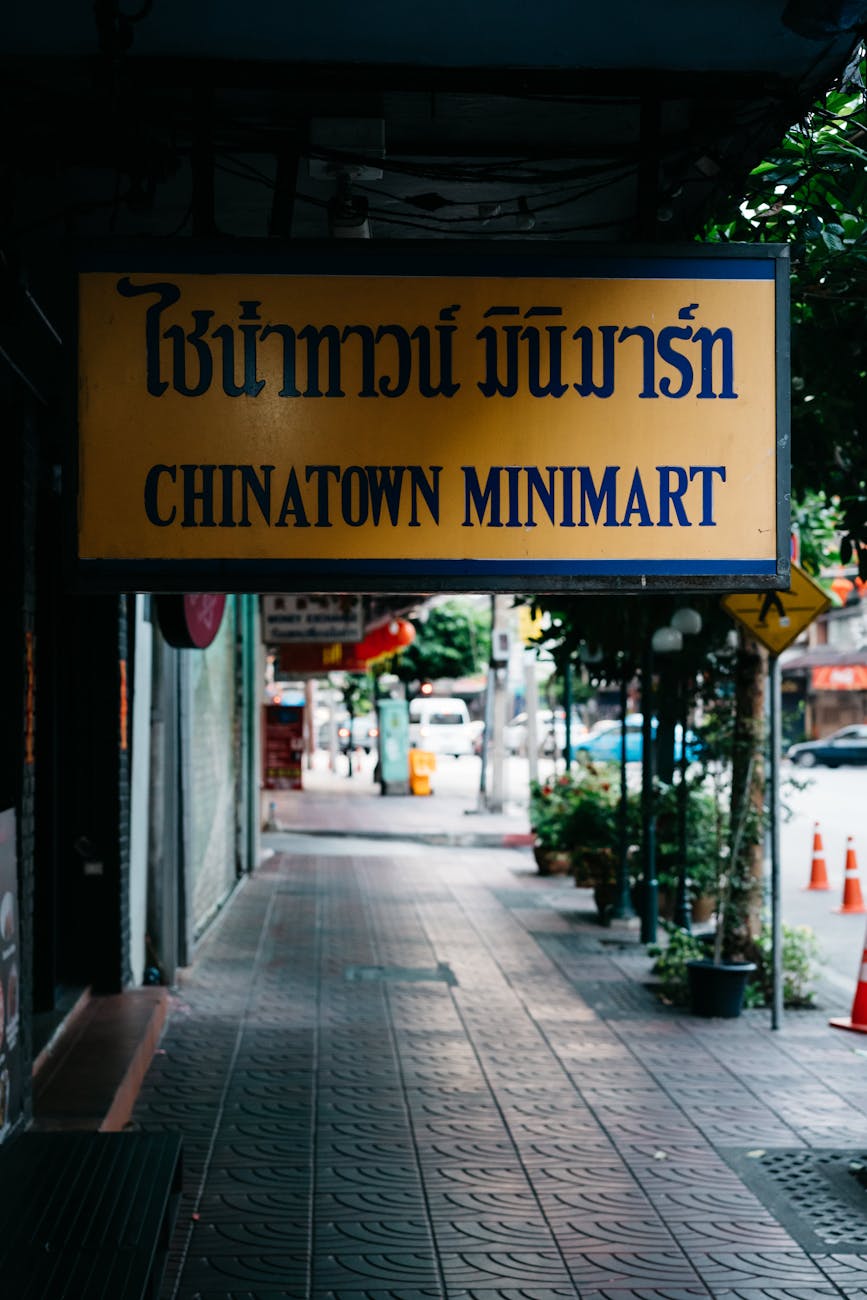There’s nothing quite like the exhilarating adventure of exploring Thailand, a land rich in vibrant culture and stunning landscapes. Travelers often find themselves mesmerized by the bustling streets of Bangkok, the tranquil beaches of Phuket, and the lush jungles of Chiang Mai. However, beneath the picturesque facade, a seemingly minor yet significant hurdle awaits many visitors: misreading Thailand’s street signs and menu items. This often leads to confusion, unintended experiences, and amusing memories. Get ready to unravel the mysteries behind the signage and dining options that characterize this beautiful country.
By diving into this guide, not only will you equip yourself with the knowledge needed to navigate the streets and eat like a local, but you’ll also elevate your travel experience. Understanding the nuances of Thailand’s street signs and menus will transform your trip from just a series of beautiful snapshots into a rich cultural journey. Let’s embark on this adventure and ensure that no misinterpretation stands in the way of your enjoyment!
Table of Contents
- Navigating Thailand’s Street Signs
- Understanding Menus in Thailand
- Tips for Travelers
- Common Misconceptions
- Seize the Adventure: Understanding Thailand’s Streets and Signage
- FAQs About Street Signs and Menus in Thailand
Navigating Thailand’s Street Signs
Street signs in Thailand can be puzzling for outsiders, especially since they often feature a mix of Thai script and English translations. While major roads and tourist attractions usually have bilingual signs, smaller alleys and less touristy areas may only display the local language. Moreover, the use of Romanized phonetics might differ greatly from their actual pronunciation in Thai. Understanding these signs can be your gateway to a more immersive experience. For instance, keep an eye out for colorful symbols that indicate food stalls, shopping areas, or historical sites. Additionally, learning a few key Thai phrases can amplify your navigation skills, giving you confidence while exploring.
Furthermore, bear in mind that directions can also be given in relative terms. Locals may refer to places in relation to well-known landmarks instead of actual street names. For example, “turn left at the monument” might seem foreign at first, but it becomes invaluable once you get accustomed to the area. Embrace this unique transcendence of navigation; it’s an adventure within your adventure. By paying close attention to signs and their surrounding context, you can turn a simple stroll into a journey filled with unexpected discoveries and delightful surprises.
Understanding Menus in Thailand
Menus in Thailand can be a culinary treasure trove, yet they may also lead to bewilderment for those unfamiliar with Thai cuisine. Trying to decipher the sometimes elaborate dish names can be overwhelming, and there’s a chance you might inadvertently order something you did not intend to. Many traditional Thai dishes consist of unfamiliar ingredients or are described in ways that don’t quite align with Western culinary terminology. In these cases, it’s beneficial to familiarize yourself with typical menu highlights. For example, understanding that “som tam” refers to spicy green papaya salad can enhance your dining experience significantly.
Moreover, you will often encounter pictures of food items on menus—a feature that’s incredibly helpful for visual learners. However, don’t rely solely on images; asking locals for recommendations can unlock a myriad of delightful food choices you wouldn’t normally consider. Street food stalls, for instance, often have hidden gems that best represent authentic Thai flavors. By being attentive and open-minded with menus, you can savor the full spectrum of Thailand’s culinary delights while sidestepping the potential pitfalls of miscommunication.
Tips for Travelers
To ensure a seamless adventure, here are some actionable tips: First, downloading a translation app can prove beneficial, especially one that offers offline capabilities. It allows you to simply scan a sign or menu item and receive an instant translation. Additionally, it’s advisable to create a personalized list of common phrases you might need, such as ‘where is’ or ‘how much is this.’ This proactive approach can remove much of the uncertainty and discomfort when faced with language barriers.
Next, consider joining local food tours or cultural excursions, where expert guides can assist with both navigation and deciphering the vast array of cuisine. These tours not only provide deeper insights into the rich cultural background of the region but also foster connections with residents who can share personal anecdotes and hotspots that may not be in your guidebook. Lastly, maintain a cheerful demeanor when encountering confusion. A smile can transcend language and may provoke kindness from locals eager to assist you in your journey!
Common Misconceptions
It’s common for travelers to mistakenly assume that all signs will be in both Thai and English, leading to frustration when that’s not the case. Additionally, many believe that local Thai cuisine is exclusively spicy, which can deter those with less adventurous palates. In reality, there are plenty of dishes available that cater to various taste preferences, accommodating the mild to the daring. Acknowledging these misconceptions can pave the way toward a more fulfilling and enjoyable visit.
Another misconception surrounds the notion that all Thai street food is unsafe to consume. In fact, many street vendors practice stringent hygiene standards, and street food often tastes better than some high-end restaurants. By adopting a more open mindset and challenging preconceived notions, you’ll enjoy a culturally rich experience that highlights the true essence of Thailand. Breaking down these barriers allows for memorable interactions and authentic experiences that far exceed the ordinary.
Seize the Adventure: Understanding Thailand’s Streets and Signage
Traveling in Thailand is both thrilling and enlightening, and having the ability to deftly navigate street signs and menus enhances your experience multiplicatively. Each street corner holds a story waiting to be unlocked, and each dish offers a taste of tradition and culture. By becoming more familiar with the local signs and cuisine, you enrich your journey and foster connections with the people you meet. Make the most of your trip by seeing past the surface and delving deeper into what Thailand has to offer.
FAQs About Street Signs and Menus in Thailand
Are street signs in Thailand always in English?
Major roads and tourist areas usually have bilingual signs, but many smaller streets may not include English.
What are some must-try dishes in Thailand?
Don’t miss dishes like Pad Thai, Tom Yum Goong (spicy shrimp soup), and Massaman Curry. Exploring local street food is essential.
How can I communicate if I don’t speak Thai?
A translation app, learning key phrases, and using gestures can greatly help in bridging the language gap.
Is street food safe to eat in Thailand?
While street food can vary, many vendors maintain high standards of cleanliness, and it’s often considered safer and tastier than some restaurants.
Can I find vegetarian or vegan options in Thailand?
Absolutely! Many Thai dishes can be made vegetarian or vegan, especially when dining in local markets and restaurants, just ask to customize your order.
Image Credit: Pexels





